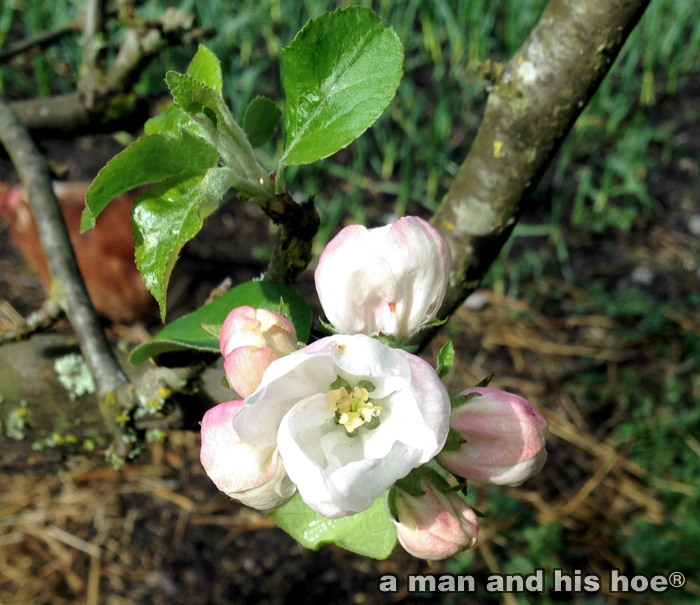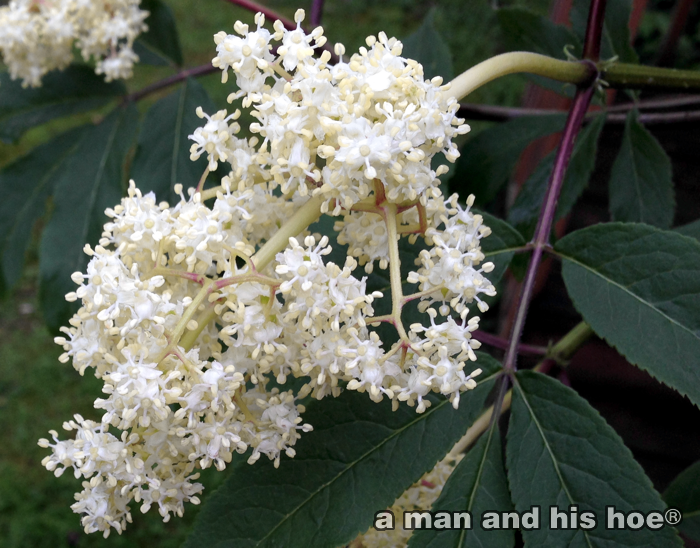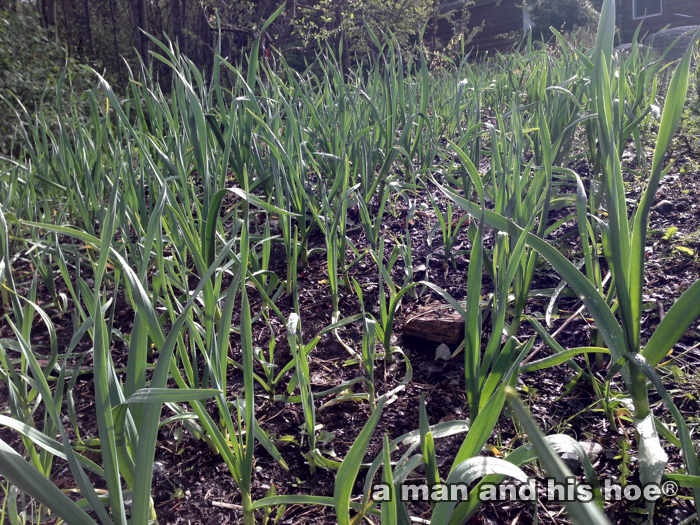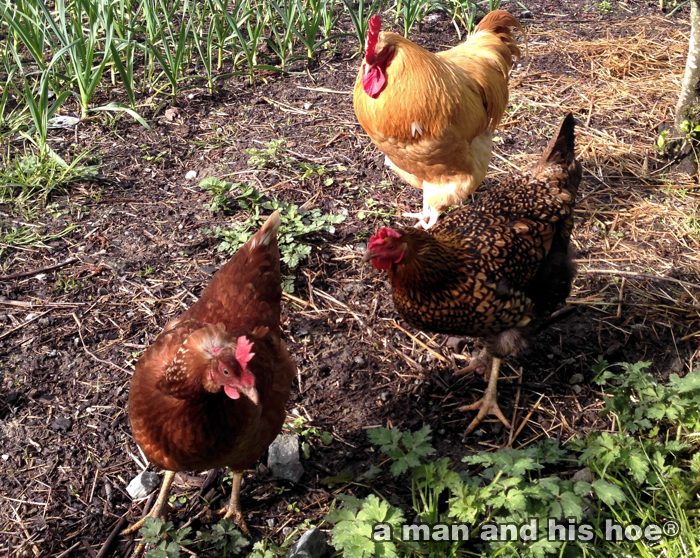This is how apple pie starts – as a small flower. It’s late April and the apple trees are blooming several weeks early. Soon, wild bees will pollinate these flowers, and all summer long the apples will soak in the sunshine and grow until they are ready, in early fall, to be eaten right off the tree or made into apple pie. From now into fall, the air buzzes with the sound of wild bees. According to Wild Bees as Alternative Pollinators, by the Penn State:Fruit Research and Extension Center, there are “3,500 bee species other than the honey bee which are also important pollinators of most specialty crops in the U.S.” 80% of bees are ground nesting, so it’s critical to have undisturbed land to provide habitat for these bees to thrive.


The elderberry bushes are also in full bloom. Come June, they will provide plenty of red fruits for wild birds to eat.


The garlic patch is nearly knee high. Lucky, Billy, and Imelda are looking for something to eat along the edges of the garlic patch. Lucky is the most curious hen at a man and his hoe®. No matter where we go, she is sure to come along to see what we are doing. And Imelda seems to have been smitten with Billy, the five year old rooster. Wherever he goes, she follows. At a typical egg or poultry farm, hens and roosters never get to develop these romances. It’s one of the benefits of being a chicken at a man and his hoe®.
Articles on wild bees:
- Wild bees make honey bees better pollinators – UCBerkeleyNews
- Wild bees enhance honey bees’ pollination of hybrid sunflower Sarah S Greenleaf and Claire Kremen – Proceedings of the National Academy of Sciences of the USA
- Attracting wild bees to farms is a good insurance policy Michigan State University
- Wildflowers and natives to attract bees and pollinators
- The Other Bees by Kristin Ohlson in modern farmer